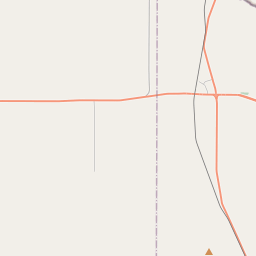Early Trails in Montague County
Historical marker location:






Lying on a direct line of travel from the United States to Mexico, California, and points west, the area now Montague County was once a network of trails. One of the first area roads forged by white men was the Chihuahua Traders Trail of 1840. Blazed by merchants hoping to open a trade route from Mexico to St. Louis, Mo., this road crossed present Montague County and left tracks for later travelers. In 1841 came the Texan-Santa Fe Expedition; though it failed to open regular commerce between the Republic of Texas and Northern Mexico, this delegation also left a road and enforced the claims of Texas to Western territories. In 1849 U.S. Army Capt. Randolph B. Marcy charted a "California Trail", using parts of older routes. This soon grew into a thoroughfare for forty-niners and sturdy pioneers who came later. In 1858 the famous Butterfield Overland Mail Line came across the county; and in the 1870's, as Texas was building her image as a cattle empire, Montague County was crossed by two feeder branches of the Chisholm Trail. In 1882, the county's first railroad followed much of the Texan-Santa Fe Trail. Today Highway 82 partly traces Marcy's route and other roads parallel many of these early trails.
(1969)
As one of the most visible programs of the Texas Historical Commission (THC), historical markers commemorate diverse topics in Texas history, including: the history and architecture of houses, commercial and public buildings, religious congregations, and military sites; events that changed the course of local and state history; and individuals who have made lasting contributions to the state, community organizations, and businesses.
The Alamo, a mission in San Antonio, is perhaps the most famous historical site in Texas. It was the site of a key battle during the Texas Revolution in 1836.
The county's namesake, Daniel Montague, arrived in the area in 1854 and became one of the first permanent settlers. Montague County was officially established and organized in 1858, with Montague serving as its first county seat. However, due to ongoing conflicts with Native American tribes and accessibility issues, many of the early settlements faced challenges in their development.
The discovery of oil and gas reserves in Montague County in the early 1900s brought significant economic development to the region. This led to an increase in population and infrastructure, and the county experienced a boom in oil production during the mid-20th century. The county's economy diversified over time to include agriculture, manufacturing, and tourism, contributing to its growth and stability.
Today, Montague County is known for its picturesque scenery, with rolling hills, vast prairies, and scenic rivers attracting outdoor enthusiasts and nature lovers. The county also celebrates its history through its various museums, historical landmarks, and annual events, preserving the heritage and culture of the area for future generations to appreciate.
Montague County Timeline
This timeline provides a condensed summary of the historical journey of Montague County, Texas.
- 1857: Montague County is established by the Texas legislature
- 1860: The first county courthouse is built in the town of Montague
- 1861-1865: Montague County residents serve in the Confederate Army during the Civil War
- 1874: The town of Saint Jo is founded
- 1882: The Fort Worth and Denver City Railway extends into Montague County, promoting economic growth
- 1884: The town of Nocona is established
- 1900: The Montague County courthouse burns down and is subsequently rebuilt
- 1930s: The Great Depression and Dust Bowl impact the county, causing economic hardship
- 1957: The Montague County Courthouse is again destroyed by fire but is reconstructed
- 2000: The county experiences population growth and ongoing development